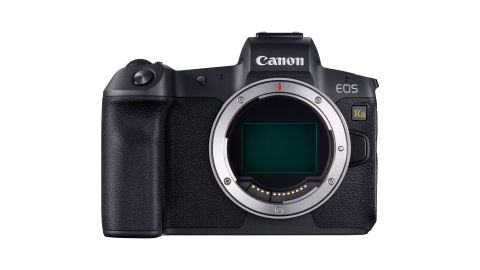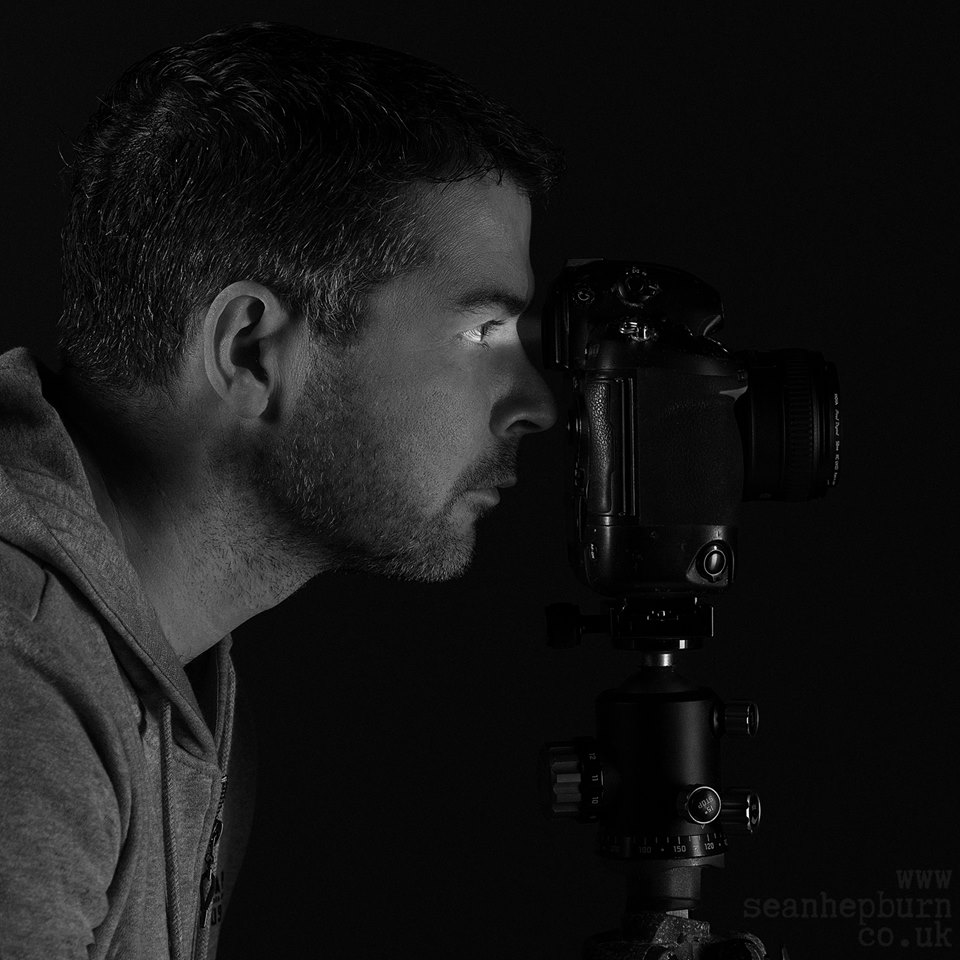Space Verdict
The Canon EOS Ra camera is an excellent first choice for deep space astrophotography and capably performs as a second camera for astro landscape photographers. Other cameras are more versatile, but the EOS Ra's ease-of-use and performance really bring out the best from night sky photography.
Pros
- +
H-Alpha sensor sensitivity
- +
30X Focus magnification
- +
Brilliant aesthetics and ergonomics
- +
User-friendly touch screen and LCD
- +
Raw file white balance firmware
Cons
- -
Low light/high ISO performance could be better
- -
Possible red halos and ghosting
- -
Price of RF lenses
- -
Only one memory card slot
Why you can trust Space.com
Astrophotographers and landscape astrophotographers looking to try and emphasize the colors of the nebula (Hydrogen Alpha) in their work now have a serious piece of kit available to help them achieve this in the Canon EOS Ra.
Differentiating from dedicated astrophotography cameras normally used on telescopes, the Canon EOS Ra interlinks with the rest of Canon’s RF mirrorless system, resulting in an array of interchangeable lenses. With a familiar feel for existing EOS R users, the camera is essentially a Canon EOS R with some adjustments, meaning the unit doubles up nicely as a second camera for landscape/nightscapers who use two bodies.
Type: Mirrorless
Kit lens: N/A sold with or without EF converter
Sensor: 30.3 megapixels
Lens mount: RF (can use EF with converter)
ISO range: 100 – 40000 (50 – 102400 expandable)
Viewfinder size/resolution: 3.2" 3.69M-dot OLED
Video capability: 4K 29.97/25.00fps
Weight: 1.45lb with battery
Size: 5.3 x 3.9 x 3.3 in
Memory card type: Single SD
The camera also doubles up for everyday use for those only using one camera who have a predominant interest in the night sky (albeit with a few notable minor color casts here and there). However, it makes it an attractive product, being a multipurpose unit with which users can easily take daytime shots, and later venture to dark sky sites to really put the Canon EOS Ra through its paces.
The Canon EOS Ra is a camera that has been designed specifically for astrophotographers, so should be a certainty on our list of the best cameras for astrophotography. It can also be used for everyday photography due to Canon’s in-camera white balance firmware.
Astrophotographers like to be able to capture the magenta color in the nebula when shooting deep space objects. More recently, landscape astrophotographers have also started to implement the color from the nebula within their nightscape scenes.
The problem is “off the shelf” interchangeable lens cameras have filters over the sensor that purposely block out the color at this end of the spectrum (wavelengths) created by the gasses within the nebula, alongside blocking multiple other wavelength values to create a clean natural-looking image. This is because allowing these wavelengths to penetrate the sensor causes obscure colors and unwanted ghosting, halos, and banding due to multiple sources omitting different unwanted wavelength frequencies.
The Canon EOS Ra is currently the only full-frame mirrorless camera manufactured for greater sensitivity to colors at the red end of the RGB spectrum, with the predominant aim to capture more of the 656.28 nm wavelength Hydrogen Alpha (H-Alpha/ hα). Canon has also taken into consideration how astrophotographers and landscape astrophotographers focus at night using manual focus and refining their focus by focus magnifying on a star. Considering this they have created a 30X focus magnifying mode allowing much easier fine-tuning and star sharpness precision.
Canon EOS Ra camera review: Design
- Excellent ergonomics & build
- Smooth and fluent touch screen system
- Lightweight and compact when used with native RF lenses
Naturally, the Canon EOS Ra camera follows the general design and ergonomics of the EOS R series of mirrorless cameras, and apart from the “Ra” written on the body, there is very little to distinguish it from the Canon EOS R. The Canon EOS Ra is compact and stylish with sleek angular curves and button positioning.
When first picking up an EOS Ra from either a traditional Canon DSLR, or another brand of DSLR or mirrorless, the positioning of dials, buttons, and general handling can seem a little strange. However, this is soon overcome, and it does not take long to adjust and realize that, in fact, the camera's layout is both unique and logical. Your hands are soon at ease with it and its smaller, lightweight design and handling quickly become the norm; so much so that picking up another camera soon afterward feels alien.
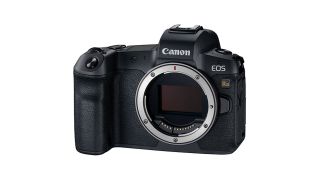
The handgrip is a generous size and comfortable, though the digital mode button within the typical shutter speed dial can take some getting used to and the multi-function bar to the right of the view finder can get in the way for those with larger hands (if necessary, multifunction bars can be switched off). The Canon EOS Ra is weather-sealed though not to the extent of traditional DSLR’s such as the Canon 5D MK4.
The customization is a little limited compared to some other brands though assigning general functions to buttons or dials is simple. The typical AF-ON and AEL buttons can be converted to adjust ISO or other commands by holding the button and adjusting the dial. ISO button customization is somewhat essential for general ease of use whilst gripping the camera in the dark, as opposed to relocating half of your hand, searching for a back, or top located ISO button. The quick (Q) menu however is non-customizable, thus a few of the menu options you may want to switch over cannot be done, forcing you to customize another button.
Canon EOS Ra camera review: Functionality
- Excellent focus magnification
- User-friendly, fully articulating LCD and touch screen control
- Control ring on RF lenses
Aside from the obvious H-Alpha sensitivity, one of the key selling points for astrophotographers is the 30X focus magnification, making focusing through a telescope easier than the typical 10X magnification. This is also useful for landscape astrophotographers and low light photographers, especially when focusing on subjects such as the moon’s surface. It does make focusing on duller stars with wide lenses easier, though sometimes you do find yourself switching back to 10X magnification with brighter stars.
When coupled with the Canon EOS Ra, fast lenses allow for autofocus to be used on the stars in the dark as long as they can be seen clearly, you can simply autofocus on a bright star, then turn the autofocus off; this even works with wide-angle lenses.
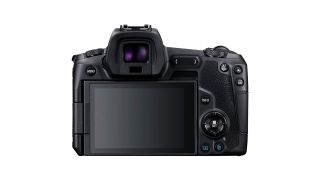
Canon’s touch screen system is nothing short of perfect: it’s a touch screen system that actually makes you want to use it due to how fluent it feels and the ease of controlling the camera using it, which isn’t the case with some other mirrorless brands. The LCD rotates 360 degrees once flipped out from the body which is highly advantageous as often, for astrophotography, the camera is at obscure angles meaning you can have the screen facing your viewing position and control the camera from the touch screen. There is one big downside to the screen design. Landscape astrophotographers usually favor L-bracket plates to hold their cameras, and this gets in the way of the LCD being able to flip out, and therefore rotate.
Canon RF lenses also have a customizable control ring on the front of the lens, allowing this to be changed to aperture, shutter speed, ISO etc to add more flexibility to camera customization.
Canon EOS Ra camera review: Performance
- 4X H-Alpha sensitivity over standard “off the shelf” cameras
- White balance shift software
- Possible red halos

The Canon EOS Ra is the first 35mm equivalent digital camera designed specifically with astrophotographers in mind since May 2015 and the legendary Nikon D810a. Purchasing this unit is almost a no-brainer for astrophotographers, though there is the matter of conversions, and where these fit in. A conversion basically means removing the “hot mirror” sensor that filters IR and UV; many companies then replace it with their own IR cut and H-Alpha enhancing filter to allow focus to work. When it comes to landscape astrophotography, conversions usually cause stars to stretch around the edge of the frame. Naturally, with Canon designing the EOS Ra with both astrophotographers and landscape astrophotographers in mind, there is no stretching of the stars with wide-angle lenses.
Canon’s reworking of the sensor filters in the EOS Ra does not disappoint, it clearly picks up the indicated 4X H-Alpha frequency so nebula can be seen in the imagery created from it. However, nebula colors are not usually visible straight from the camera; often, when shooting landscapes at night, RGB post-production techniques are required to extract the data. Tracking landscape astrophotography on the Canon EOS Ra also helps capture more data, increasing the intensity of nebula color within the image. These advanced techniques are factors that may put less experienced landscape astrophotographers off purchasing the Canon EOS Ra.

The 30.3-megapixel sensor easily holds its own, though it’s difficult to understand why Canon rushed this out with a fairly old sensor, easily beaten with regards to overall landscape astrophotography image quality by cameras such as the Sony A7iii, Nikon Z6/7, and Nikon D850.
High ISO images are cleaner out of the aforementioned cameras, and landscape astrophotographers usually track or stack for the sky, then create a long exposure for the foreground at a lower Iso to generate a cleaner image; the Canon EOS Ra just lags behind a little on overall image rendition, ISO grain, and foreground detail for long exposures.
Six months later Canon released an incredible low light performer in the EOS R6 with only 20.1 megapixels, it’s well documented that the lower the megapixel count, the better real world low light performance in the field is with current sensor technology. It’s a shame the EOS Ra didn’t capitalize on using the R6 sensor as this would have made it a serious landscape astrophotography powerhouse.
Battery life of the Ra is reasonable, even better with the LCD brightness turned down or off whilst shooting, two/three fully charged LP-E6NH batteries should easily last most landscape astrophotographers a full night of shooting with the unit.
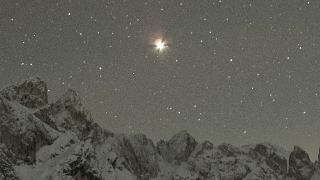
Another plus side to the EOS Ra is its little-known built-in software that shifts the white balance to an almost normal tone when using the camera for purposes other than at night. The software is excellent, and although tints may be slightly different on certain colors within a scene, the built-in white balance shift software does an impressive job at making the Raw files look as if they have come out of a standard camera not designed for Astro, a feature impossible to replicate ona 3rd party conversion.
The Canon EOS Ra also has another problem, though not well documented as the majority of deep sky astrophotographers use multiple external filters and therefore filter out the problem. The EOS Ra can cause magenta halos on bright objects (see image above), such as bright stars, planets, especially Mars and the sun if shooting in the day. It is thought this is due to the camera allowing light in from the far end of the wavelength spectrum; ie past 656nm and towards the 700nm end of the continuum.
Should you buy the Canon EOS Ra?
The Canon EOS Ra is an excellent first choice camera for deep space astrophotographers, and should definitely make the grade as camera number two for landscape/landscape astrophotographers who understand RGB editing and how to use trackers and advanced techniques to get the best from the device. However, it is definitely not an ideal all-around choice for a solo multipurpose camera for those with only a slight interest in astrophotography/landscape astrophotography.
If this product isn’t for you
There are no other 35mm DSLR or mirrorless dedicated astrophotography cameras currently on the market unless you can hunt down the classic Nikon D810a or a lower caliber model such as a Canon 60Da. With Canon now having discontinued the Canon EOS Ra, if you are serious about a brand-manufactured dedicated astrophotography camera, you are limited to hunting down one of the models aforementioned as soon as possible.
If you are just starting out in landscape astrophotography but are also interested in other genres, and would like to go with the Canon EOS R system, the Canon R6 is the way to go, unless of course, you can afford an R5.
For Sony, the Sony A7iii has been a front runner for all-around performance and low light for some time. The Nikon Z6/7MKi/MKii also perform well and have excellent build quality, and produce beautiful images and color rendition.
Join our Space Forums to keep talking space on the latest missions, night sky and more! And if you have a news tip, correction or comment, let us know at: community@space.com.
Ollie quit his 9-5 early in 2014, going from a semi-pro landscape and nightscape photographer to a full time pro. He now focuses predominantly on nightscape/landscape astrophotography and runs international workshops in these fields. His photographic work and written nightscape articles have featured in multiple titles across the globe. To find out more about him - and his workshops - visit ollietaylorphotography.com.
